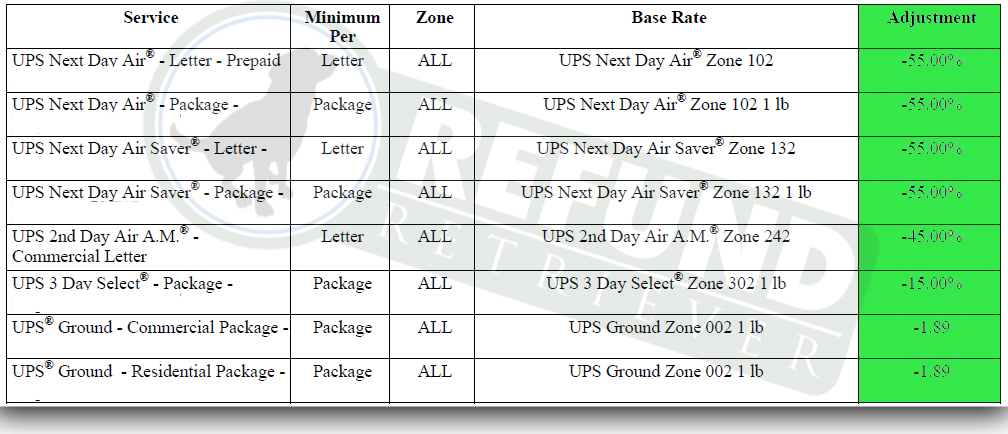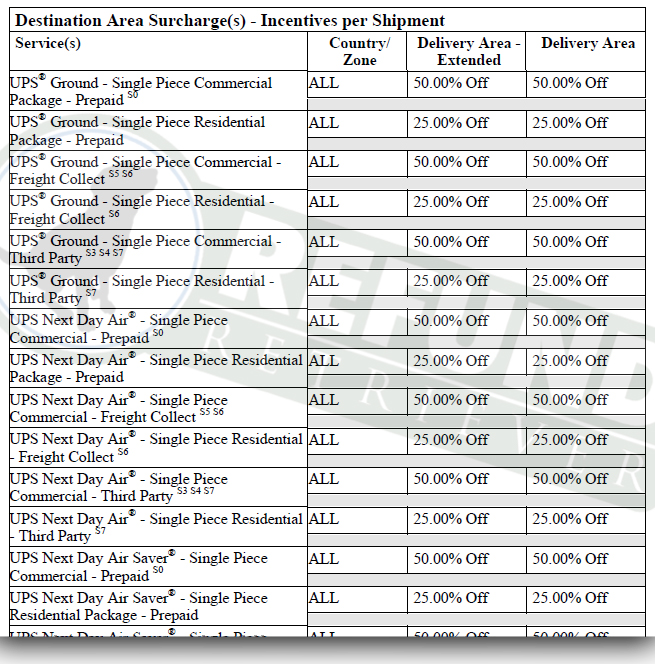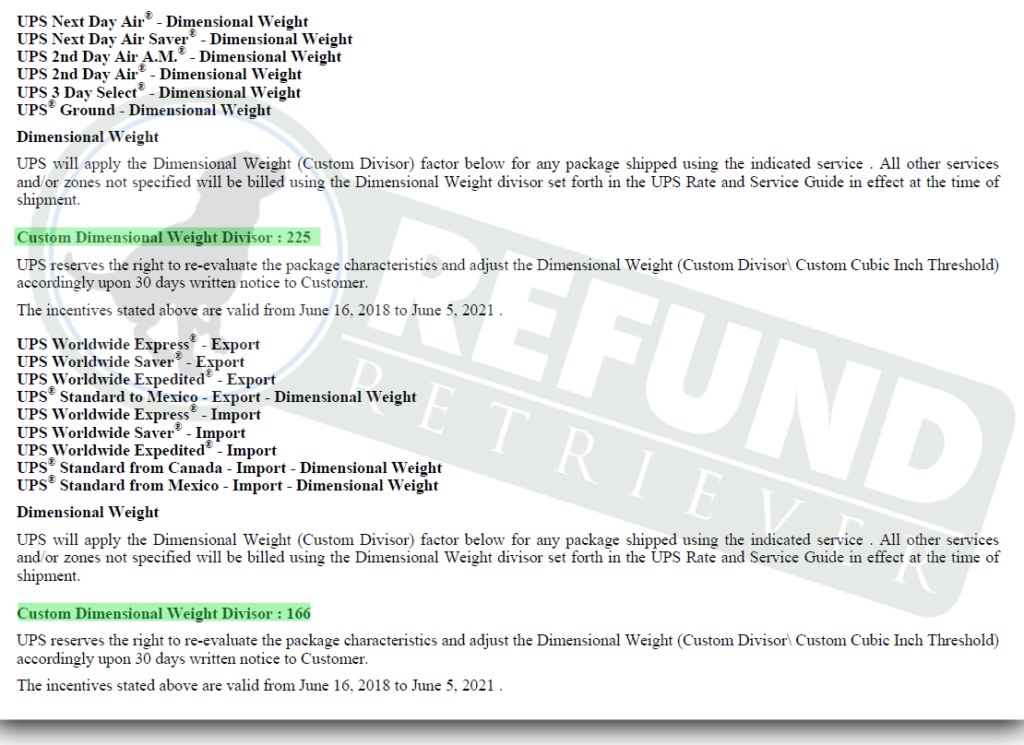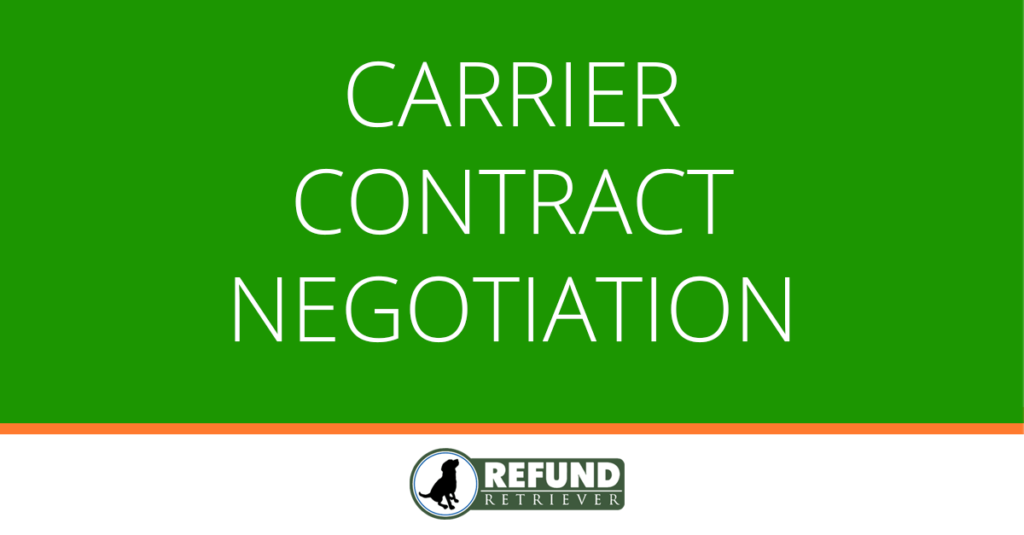In our previous blog, we covered the basic outline of a UPS agreement and the discount incentives on the published shipping rates. In part two, we will outline a few more essential points that you will need to understand to begin a fair and balanced UPS shipper contract negotiation.
- Accessorial Fee Reductions
- Accessorial Fee Variances
- Dim Weight Reductions
- How do you get the best UPS agreement?
- Let the Data do the Talking
- Billing Errors and Auditing
- Need additional help with your UPS agreement?
UPS Minimum Net Charges
For each shipment, all UPS customers agree to pay the greater of:
- (a) net shipment charge based on the above incentives or
- (b) the minimum net shipment charge.
If UPS gives any discounts on your minimum charges, the minimum net charge is calculated by deducting the applicable percent off from the published list rate for the respective service. In addition, this discount could be a percentage reduction or a dollar amount reduction.

Accessorial Fee Reductions
Accessorial fees are the small charges that seem like they do not really mean much overall. However, pennies make pounds and these fees can account for 20 to 35% of your yearly shipping fees. Let’s bring up reporting and analytics again, you need to know how many of these small fees accounted for last year’s shipping costs. Many accessorial fees are avoidable, however, most are not. Residential, fuel surcharge, delivery area, address correction and over one hundred more.

So what can you do to lower accessorial fee costs? Ask for a reduction in the cost of these fees during your UPS shipper contract negotiation. If you are a larger volume shipper, many of these fees can either be reduced or eliminated. In addition, these fees could be tied to your shipping volumes. We have seen an overall reduction in a fee up to a certain volume, then UPS takes some back over a certain level. Take the image below, if this client has 129 additional handling fees, UPS will take 25% off the fee. Once they incur 130 of these charges in one week, they only get 20% off.

In addition to lowering the cost of your accessorial fees, work on lowering the number of accessorial fees. How many of these fees can proper packaging or processes reduce the number of times your company sees address corrections or additional handling fees? Make sure you are using the proper box size to get your product to the end-user safely. This will not only lower accessorial fees but reduce the amount of DIM weight on your invoices.
Accessorial Fee Variances
What are variances? Variances are deviations in the definition of an accessorial fee. However, it is possible to remove specific zip codes from the DAS list. Is it possible to change the length of the UPS definition of an additional handling fee? Yes, it is. Ask your UPS representative; they do have room to move during your UPS shipper contract negotiation.
Dim Weight Reductions

Dimensional weight (DIM) is a formula UPS uses to apply rates based on the shipment’s actual length, width, and height and not the actual weight. In addition, DIM weight applies to each and every package on your invoice. The dimensional weight makes large lightweight parcels cost more to ship than smaller parcels, even if they both have the same exact weight.
Accordingly, it is essential to know what products or shipments leaving your warehouse will be hit with a DIM penalty. Mainly, large boxes cost more to ship than small boxes, even if they are the same actual weights. It is vital to know how many of your packages each week have a higher billed than actual weight?
Once you know how dimensional weight affects your packages and shipping costs, it is time to take action. What is the proper DIM divisor to request during a UPS shipper contract negotiation? The proper DIM divisor is what data and analytics can tell you. Right now, all shippers have a standard DIM divisor of 139 for ground unless otherwise specified in the carrier agreement.
Your company’s DIM divisor should be as high as possible without giving up too many concessions in the UPS agreement. A higher DIM divisor means lower billed weight on each invoice.
How to approach a UPS shipper contract negotiation?
Once again, reporting and analytics are key to knowing your shipping history and having the firepower to take on a giant like UPS. Know your volumes, know your accessorial fee spend.
- Obtain the highest possible guaranteed discount tiers.
- Ensure your tier volume discounts are achievable.
- Obtain a reduction in minimum net charges.
- Lower you accessorial costs and usage.
- Obtain a higher DIM divisor.
- Keep the GSR in place. Never waive this right, it will hurt your bottom line in the long run.
- Do not put all your eggs in one basket. Particularly, keep the carriers aware that competition is an option.
- Lastly, never let carrier relationship get in the way of a UPS shipper contract negotiation. Each carrier representative receives compensation by profit is achieved from your company. Freebies are awesome, never let them get in the way of getting the discounts you deserve.
UPS shipper contract negotiation is all about DATA
Above all else, fully prepare when going into a UPS shipper contract negotiation, this where your data and analytics come in. It’s easy to see your past shipments with Refund Retriever. Visit our new shipping analytics to see your shipment history and access past data.
Even if you don’t have a threshold you want to negotiate, our reporting can benchmark your discounts with similarly sized shippers. The more information available the better the UPS shipper contract negotiation will go in your favor.
Billing Errors and Auditing
Even the best analytics and review processes won’t prevent FedEx or UPS mistakes. Use a small parcel auditor to review your invoices for errors. Regularly, millions of dollars’ worth of mistakes are made by carriers on invoices each week, these are never caught by shippers.
If you really want to control your shipping spend and stay informed, don’t be afraid to use outside help like Refund Retriever with your UPS shipper contract negotiation.
Need additional help with your UPS shipper contract negotiation?
All of this can be overwhelming. How much time and effort should a company put into a UPS shipper contract negotiation? In short, this is a balancing act. To summarize, if you put the same amount of time into growing core business processes would you be in a better position? Therefore, contact us at Refund Retriever for help with your UPS agreements.
To maximize your UPS shipper contract negotiation, empower yourself with data that highlights where costs originate. Identification and reductions can affect your bottom line. Refund Retriever can help. We are a partner who has the experience, has seen hundreds of shipping contracts, and knows how to lower shipping costs. When starting a UPS contract negotiation, look for the partner that offers a true data-based approach and can analyze your parcel agreement to get the best possible deal. The starting point for this process is data and analytics, let’s take a look at over UPS shipping spend and the true pain points. There are many moving parts when it comes to your overall shipping costs, Refund Retriever can help.

